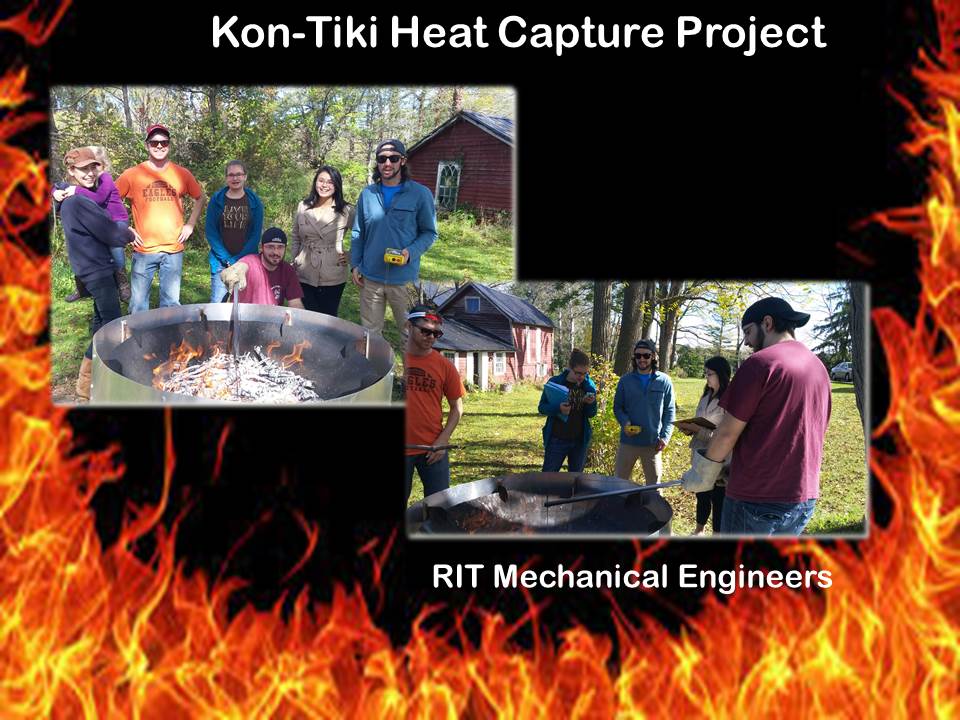This academic year I am very excited to be working with two different engineering teams from the Rochester Institute of Technology (RIT). One team is looking at how to optimize heat capture while carbonizing biomass. The other is prototyping the creation of roofing tiles made of biochar and concrete to be used, if all goes well, on the homes built by the 4 Walls Project in Nicaragua (more on that project later!).
Last Saturday the heat capture team came over for a few hours of hands-on biochar making using the Kon-Tiki. Every time I teach people how to make biochar, I learn something new. What was great about this group is that they came loaded with gadgets! Just listening to them problem-solving was quite an experience as they are all mechanical engineers – a far cry from my business background! What temperature could the probes handle (one did start to melt!)? What timing intervals would be best? Where should temperatures be taken and why? All good questions, and I would have to leave it to them to provide in depth answers! Fortunately lots of this data can be found on the project team’s website.
The team is now designing various possible prototypes for sterilizing water, pasteurizing liquids and drying crops. This kind of low cost, low tech heat capture can be enormously helpful in the developing world, in post-disaster scenarios, in refugee camps, etc. In addition to working locally with me on this, the team has tapped into some excellent international help from experts in Switzerland, Australia and Serbia that have already been experimenting with heat capture using Kon Tiki.
The best design will be built, tested and should debut at next year’s RIT Imagine event in May, along with the roofing tiles. Mark your calendars to come check it out!
A special note of thanks goes out to Sarah Brownell, the RIT lecturer (holding her daughter in the picture above) that is coordinating this and dozens of other senior engineering projects that have the potential to materially improve lives of those in the developing world.


